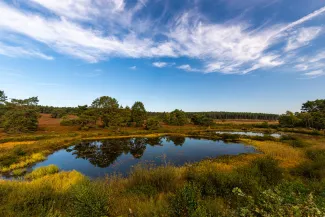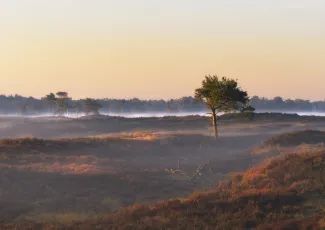
Belgium has a very diverse geological underground with rocks of varying ages:
- Hard rocks that are more than 400 million years old
- Recent sedimentary deposits
These different layers, with varying composition, grain size, and hardness, also have different levels of water permeability. If the permeability is too low, geothermal energy cannot be extracted.
In Belgium, the surface temperature is 11°C. For every kilometer you drill, the temperature increases by 30°C. Since the minimum temperature required for geothermal energy is 25°C, this is typically found at around 500 meters deep in Belgium. The deeper you drill, the higher the temperature becomes, as the Earth's core is partially made up of magma. To have enough heat for deep geothermal applications, such as district heating, you need temperatures of at least 45°C, and for electricity production, even 90°C.
Kempen & Northern Limburg
In the Kempen basin, the northern part of Antwerp and Limburg, there is enough water and the ground layers are permeable enough to support applications requiring temperatures of 40°C or more. The Voer region also geologically fits into this area.
Hainaut
The coal basin of Hainaut also meets the conditions for deep geothermal energy. Applications that require heat of 40°C or more can be created here. Geothermal energy was previously discovered in this area, but its potential was not exploited due to a lack of technological knowledge (see more).
South-West Flanders
In the far south of West Flanders, there is also a good water-permeable layer, but it often lies at too shallow a depth, meaning the temperatures are not high enough.
Rest of Belgium
The rest of Belgium is largely made up of hard rocks and/or clay without the deep groundwater layers needed for conventional geothermal applications. If one wants to tap into the natural ground heat here, alternatives like Hot Dry Rock or a vertical heat probe must be used.




